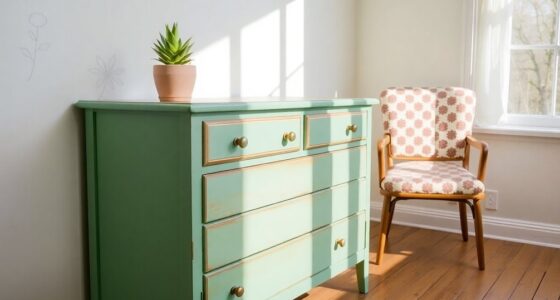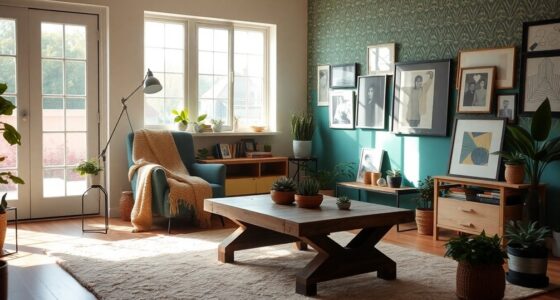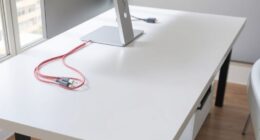To make house painting affordable, start by choosing your colors wisely; test shades in sample jars and pay attention to undertones. Prioritize high-traffic areas for a fresh look, and invest in quality supplies for the best results. Master surface prep by cleaning thoroughly and using primer. Finally, use efficient methods like rolling in a "W" shape for even coverage. With these tips, you're on your way to a stunning transformation. There's plenty more to explore!
Key Takeaways
- Test paint colors using sample jars to find the perfect shade without overspending on full cans.
- Focus on high-traffic areas first to make an immediate impact on your home's appearance.
- Use local paint stores' color-matching services for affordable alternatives to high-end paints.
- Incorporate accent walls with bold colors to add visual interest without repainting entire rooms.
- Invest in quality brushes and rollers to ensure a professional finish and reduce paint waste.
Choose Your Colors Wisely
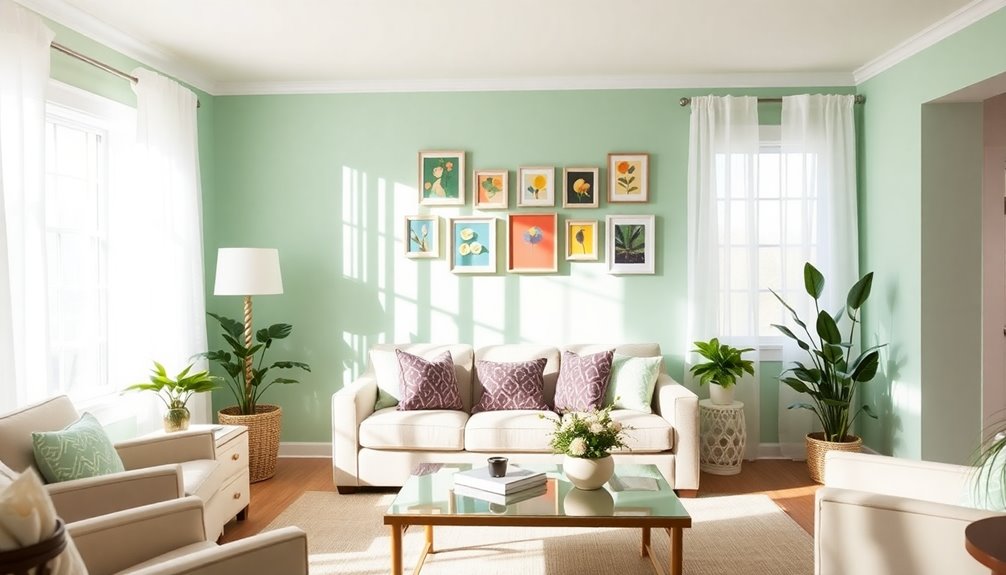
Choosing your colors wisely can make all the difference in your painting project. Start by testing multiple shades in 8 oz. sample jars, as colors can look different in various lighting throughout the day.
When selecting neutral tones like white or gray, pay attention to their undertones to guarantee they complement your overall design. For a cohesive flow throughout your home, consider using the same or similar shades in different rooms.
Don't forget to visit local paint stores to utilize color-matching services that can help you find affordable alternatives to premium brands.
Additionally, incorporating accent walls with bold colors can enhance your space's aesthetics while allowing for more subdued tones elsewhere, striking the perfect balance in your home. Using earthy shades can evoke a cozy ambiance, reminiscent of a farmhouse kitchen atmosphere.
Prioritize Essential Areas
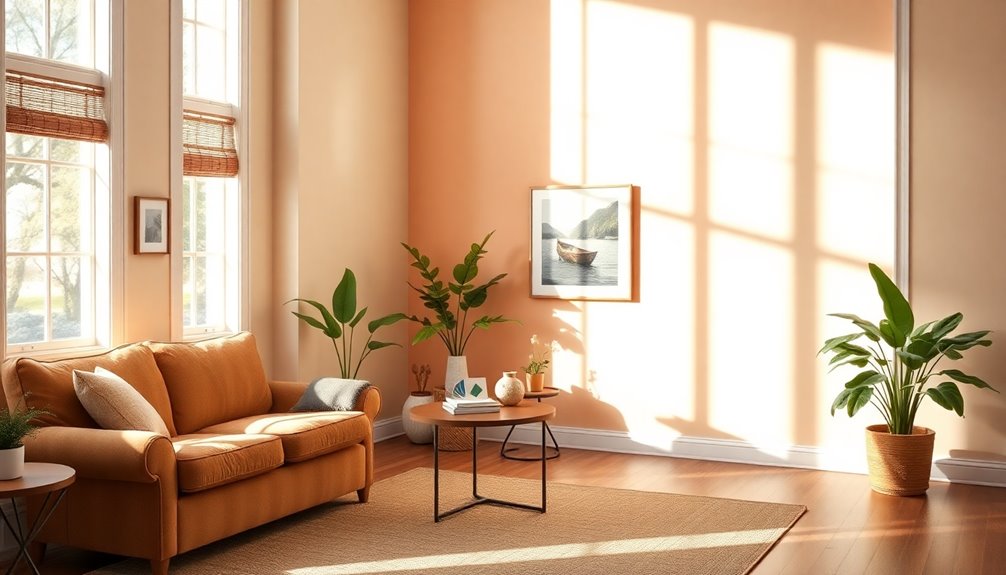
When it comes to painting your home, prioritizing essential areas can make a significant impact on both appearance and longevity.
Start by evaluating each room and focus on high-traffic areas like hallways, kitchens, and living rooms, as these spaces often show signs of wear.
Address issues like peeling paint, cracks, or mildew to enhance your home's aesthetic and protect against further damage.
Use a paint calculator to determine the right amount of paint needed for these essential areas, ensuring you don't waste resources.
Consider using durable finishes in children's playrooms and softer colors in bedrooms.
Finally, don't forget to paint accent walls first; they can dramatically transform a room's style without requiring a full repaint. Additionally, maintaining a clean home environment can help reduce allergens and pollutants, which contributes to a healthier living space during and after your painting project.
Invest in High-Quality Supplies
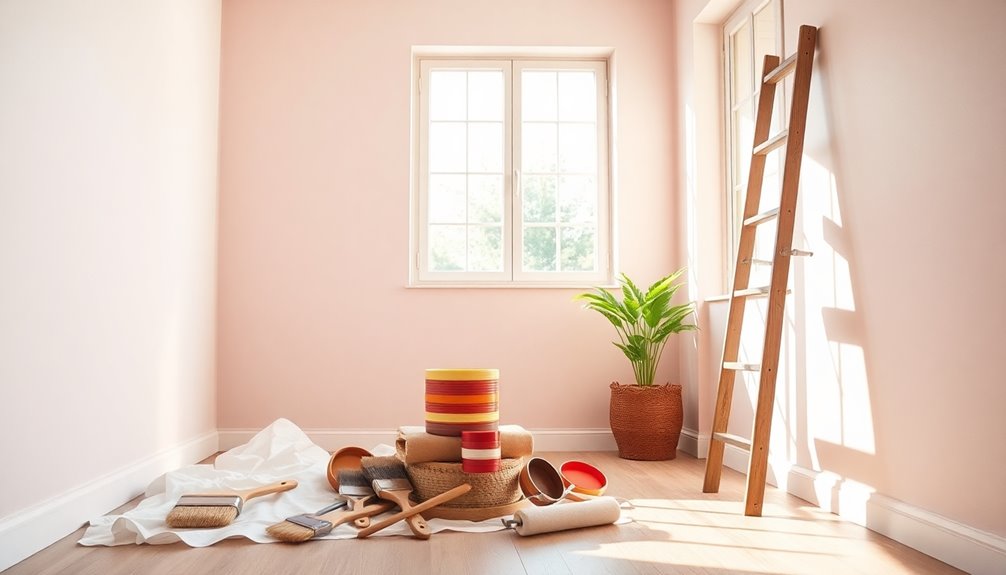
Focusing on key areas of your home sets the stage for a successful painting project, but it's equally important to invest in high-quality supplies.
By investing in quality, like Benjamin Moore's Aura Interior paint, you'll get better coverage and durability compared to budget options. Quality brushes, such as Wooster flat and angled brushes, guarantee a smoother application, reducing brush strokes and enhancing your overall finish.
Don't overlook high-quality rollers with lint-free microfiber covers for an even texture without fuzz or streaks. A sturdy paint tray with pouring spouts minimizes spills and keeps your workspace clean.
Finally, tools like a paint edger save time and help create clean lines when painting edges, resulting in a professional-looking finish for your affordable house painting project. Additionally, using energy monitoring features can help you track the efficiency of your home's heating and cooling while you focus on your painting project.
Master Surface Preparation Techniques
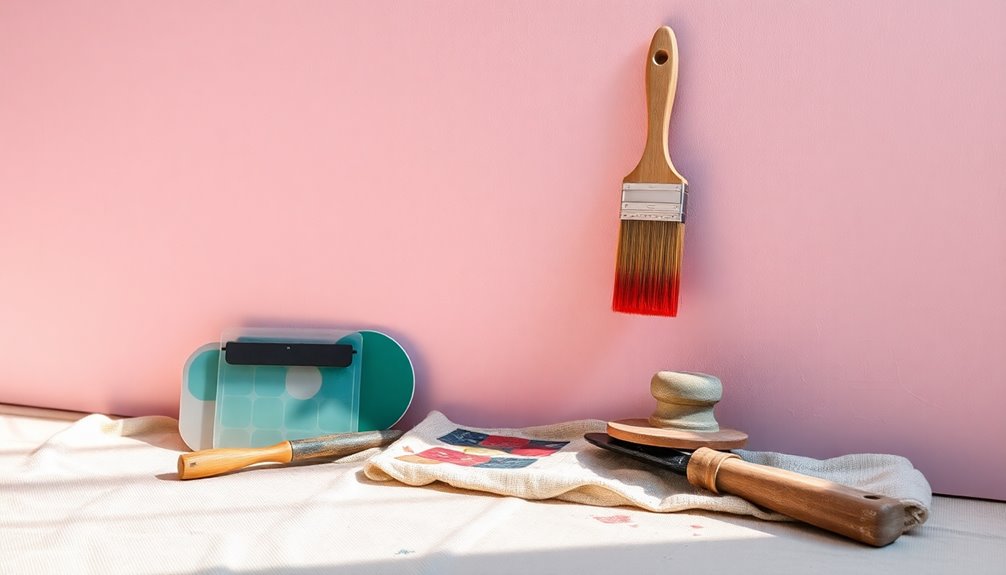
Proper surface preparation is essential for achieving a flawless paint job, as it directly impacts the paint's adhesion and overall appearance.
Start by thoroughly cleaning surfaces to remove dirt, mildew, and loose paint using a mixture of water and mild detergent.
Once clean, inspect for damage and fill holes, cracks, and gaps with quality spackle or wood filler.
Sand these repaired areas for a smooth finish, using 120-grit paper for walls and 220-grit for moldings.
Don't forget to seal gaps between trim and walls with caulk to prevent paint bleed.
Finally, always apply primer to new drywall or markedly different colors to enhance adhesion and guarantee you can paint evenly for a uniform look.
Utilize Efficient Painting Methods
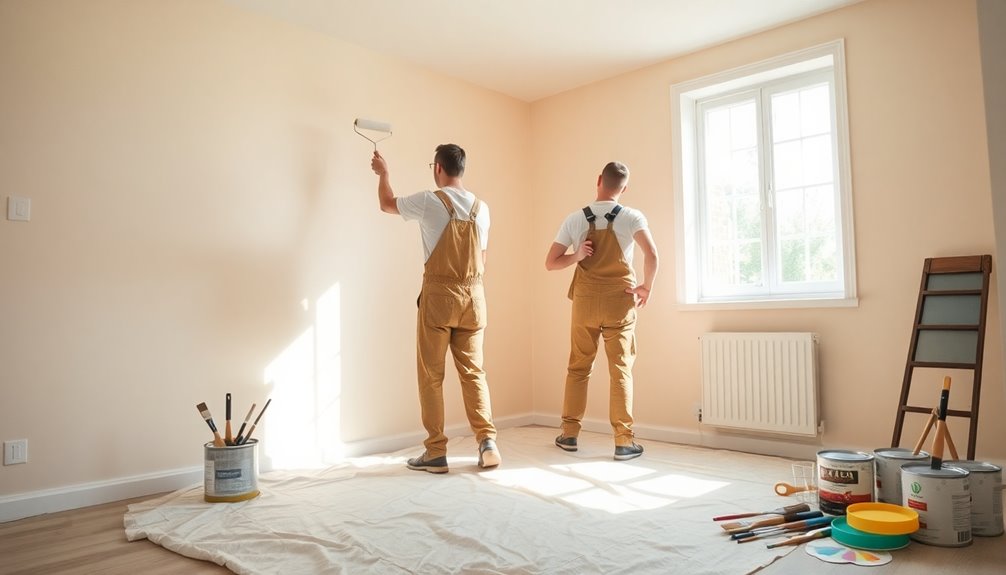
To achieve a professional-looking paint job efficiently, it's crucial to adopt effective painting methods.
Start by using the "W" shape technique for rolling paint; it helps you achieve even coverage and prevents streaks.
Invest in extension poles to reach high areas without the hassle of a ladder, speeding up your paint project and enhancing safety.
For clean edges, try a Shur-Line Paint Edger Pro to eliminate the need for painter's tape.
Here are some quick painting tips:
- Use high-quality, lint-free microfiber roller covers for better paint pickup.
- Keep a damp cloth nearby for immediate clean-up of spills.
- Allow latex paint to dry thoroughly between coats for the best results.
Incorporating natural materials in your decor choices can inspire a tranquil and harmonious environment as you paint.
Frequently Asked Questions
How to Paint a House on a Budget?
If you want to paint your house on a budget, start by choosing a cost-effective paint like Behr's Premium Plus Ultra for less visible areas.
Invest in sample jars to test colors before buying in bulk. Use painter's tape and drop cloths to protect your furniture and floors, making cleanup easier.
Look for sales and coupons at local stores to save money, and opt for semi-gloss finishes for easier touch-ups later.
What Is the Correct Sequence of Painting a House?
Perfecting the painting process means mastering the method!
Start with the ceiling, applying a 3-inch band around the edges with an angled brush.
Next, tackle the trim and moldings for clean lines.
Move on to the walls, cutting in and rolling for even coverage.
Finally, finish with the baseboards, ensuring a neat bottom line.
Following this top-to-bottom sequence saves you time and keeps everything looking pristine without pesky drips ruining your hard work!
How Much Paint Do I Need for a 2000 Square Foot House Interior?
To determine how much paint you need for a 2000 square foot house interior, start by calculating the coverage.
One gallon typically covers about 350 to 400 square feet, so you'd need about 5 to 6 gallons for a single coat.
If you're applying two coats, double that estimate for a total of 10 to 12 gallons.
Don't forget to factor in extra paint for ceilings and trim, plus a little for touch-ups.
How to Plan Painting a House?
To plan painting your house, start by evaluating the areas that need attention. Document any damage and prioritize repairs.
Next, create a budget that includes paint and supplies, while considering quality materials for durability.
Develop a timeline based on ideal weather conditions for painting. Measure your spaces accurately and calculate the paint needed to avoid waste.
Finally, look for cost-saving strategies, like bulk buying or seasonal sales, to stretch your budget further.
Conclusion
By following these affordable house painting design tips, you can transform your space without breaking the bank. For instance, imagine giving your living room a fresh look with a bold accent wall using leftover paint from a previous project. You'll not only save money but also create a stunning focal point. With careful planning and smart choices, you can achieve a beautiful home that reflects your style while staying within budget. Happy painting!


